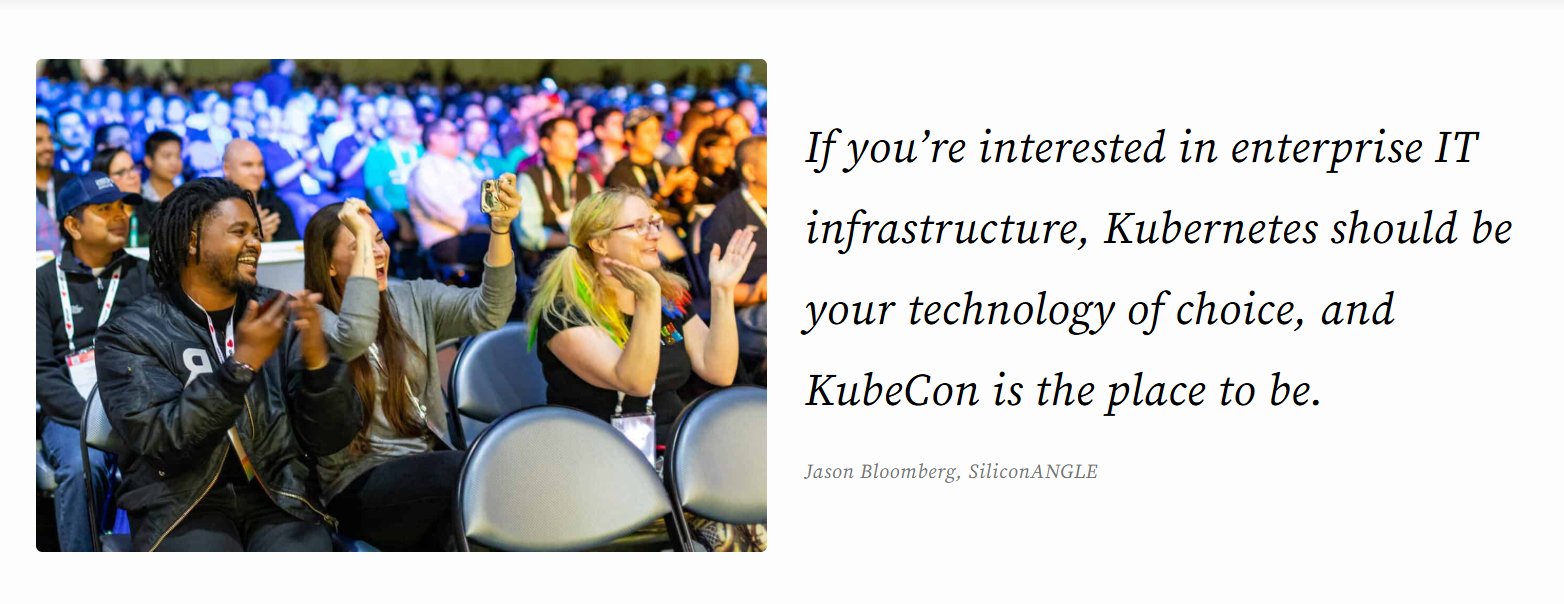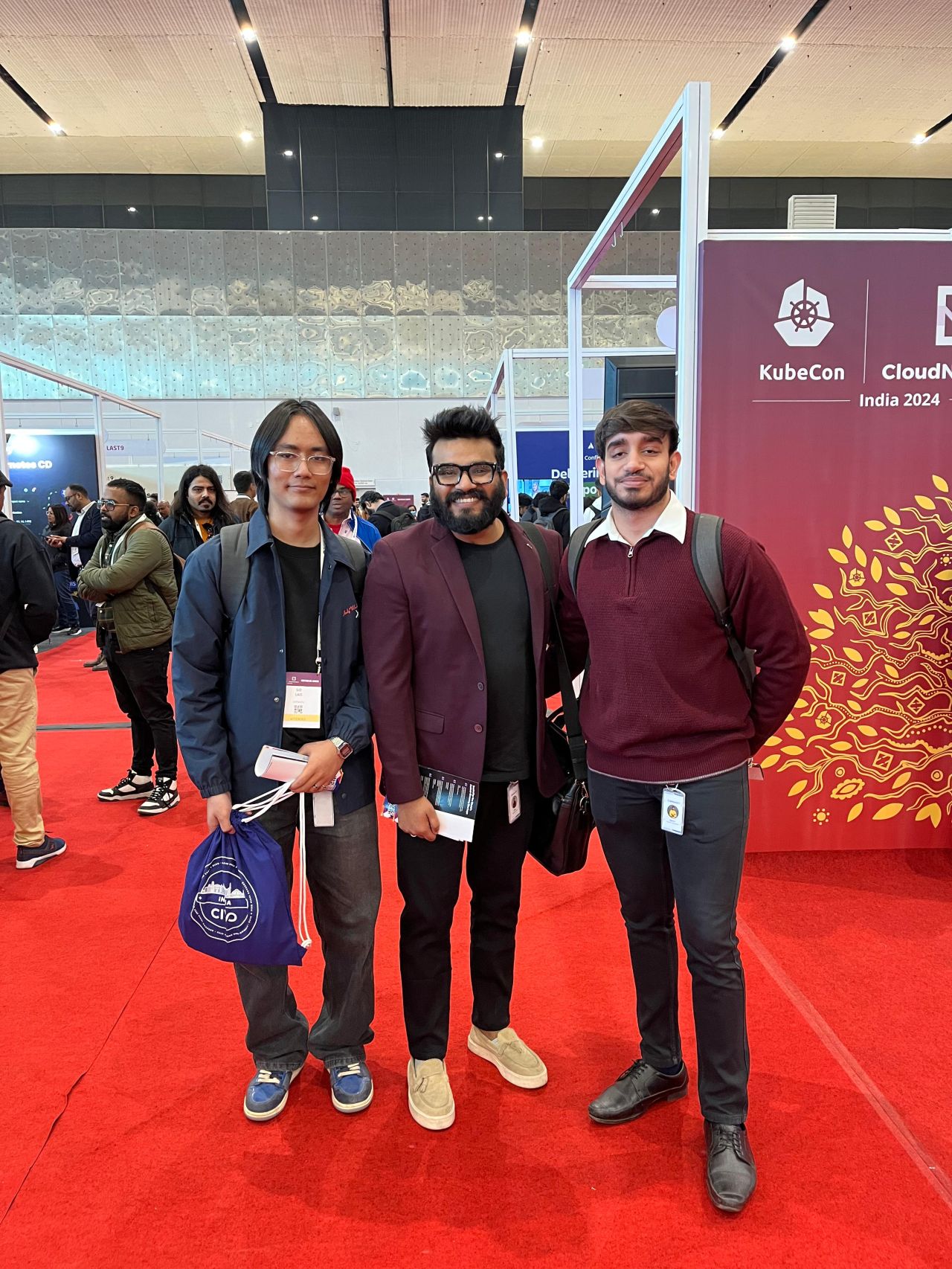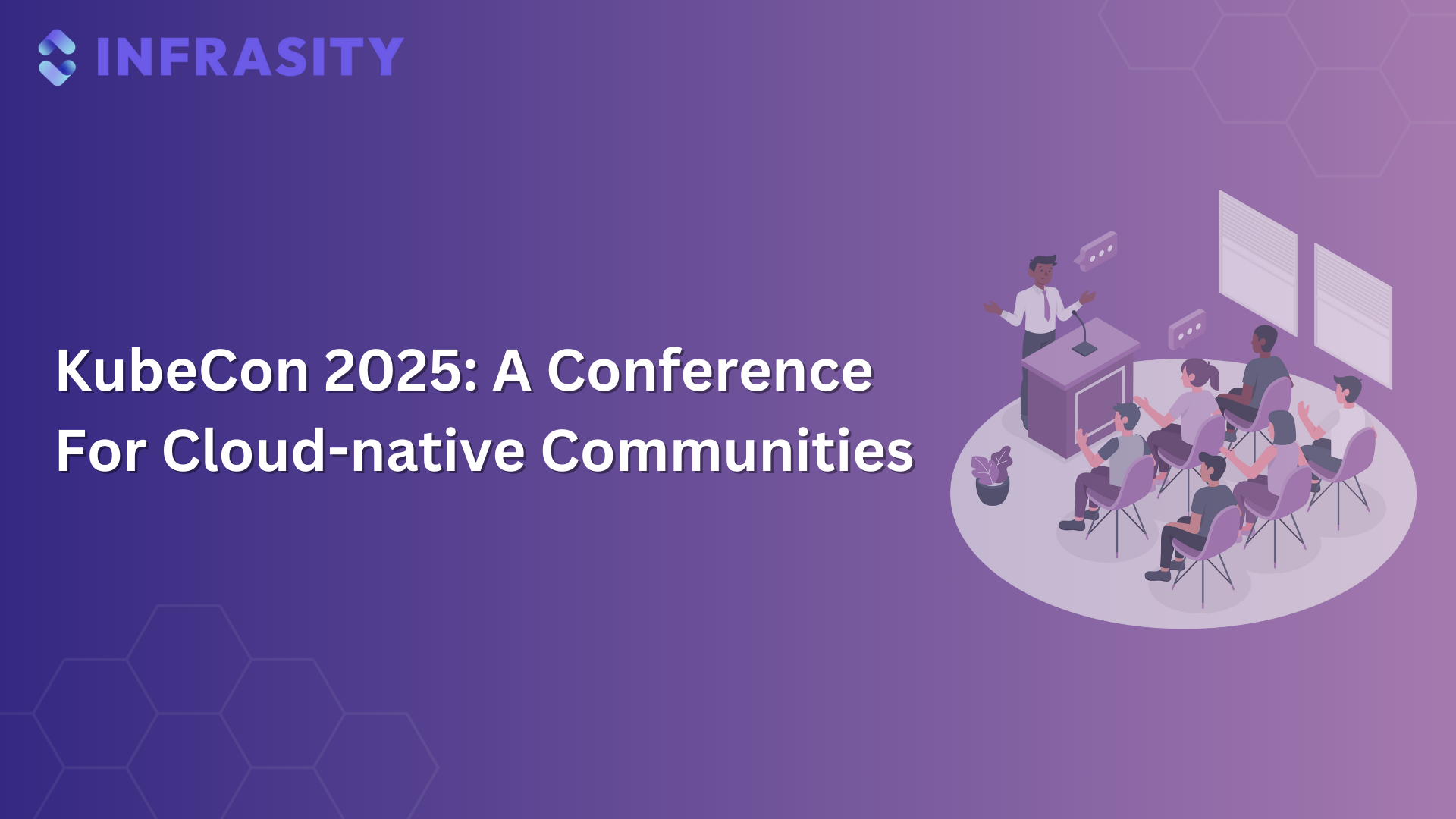What is KubeCon?
KubeCon + CloudNativeCon, a developer-focused conference, is being organized by the Cloud Native Computing Foundation (CNCF). First started in 2015, KubeCon has brought together the global open-source and cloud-native community of developers, architects, technical leaders, DevOps, infrastructure engineers, students, founders, CIOs, and CTOs.
 Source: cncf.io
Source: cncf.io
It will be all about Kubernetes and broader DevOps trends and will take place in Europe, China, Japan, India, and North America, as per the KubeCon schedule for 2025.
Why Should You Attend KubeCon?
KubeCon + CloudNativeCon isn’t just a Kubernetes event; it’s the meeting point for everyone who wants to build, run, scale, and evolve modern infrastructure. It’s designed for:
1. Cloud-Native Practitioners
If you’re a developer, SRE, DevOps engineer, or part of a development team, KubeCon is built for you.
Whether you’re scaling clusters, managing infrastructure as code, debugging service-to-service latency, or building internal platforms, this is where the tools you're likely to adopt next are being launched, demoed, and discussed.
You’ll see companies demoing their platforms regarding everything from CI/CD pipelines, service mesh, and Kubernetes policy management to low-level runtime observability and eBPF tooling. It’s also one of the few places where you can dive into edge cases, see how other teams are solving similar problems, and walk away with technical insights you can apply right away.
KubeCon isn’t just a conference; it’s where cloud-native practitioners share real-world implementations, lessons learned in production, and the tools and approaches that are shaping modern infrastructure.
2. Architects and Technical Leaders
If you're designing platforms or leading engineering strategy, KubeCon gives you real visibility into how teams are actually building at scale.
As an architect, you’ll learn about how SaaS companies are approaching multi-cluster design, managing service-to-service communication, enforcing policy as code, and making trade-offs between control and velocity.
As a technical leader, you’ll see what tools are gaining traction, how platform teams are improving developer experience, and how infrastructure decisions align with the business objectives. It’s also where you’ll pick up practical ideas you can bring back to your team, things that improve performance, simplify workflows, or unlock the next phase of scale.
3. CIOs and CTOs
If you're steering your organisation’s technology strategy, KubeCon will offer you a ground-level view of where the cloud-native ecosystem is headed, directly from the people building and adopting it. You will get to assess emerging technologies, discover promising startups, and understand how developer platforms, security, and infrastructure priorities are shifting. You'll also hear firsthand how peers are managing platform complexity, and see which investments are actually delivering value.
4. Investors
KubeCon is where early-stage startups unveil what they’re building, where technical founders walk the floor with real ideas, and where the next breakout DevTool companies are often spotted.
If you’re a VC or angel investor focused on developer tools, cloud-native platforms, or open-source commercialisation, KubeCon offers direct access to the builders behind the tools practitioners are actually adopting. It’s a place to have real conversations, see where attention is shifting, and build conviction early.
Whether you’re sourcing your next investment or tracking where the ecosystem is heading, KubeCon is where those threads start.
KubeCon is more than just an event; it’s a place where networks are built. Whether you are a developer, architect, technical leader, CIO, CTO, or investor, it brings together people who are transforming the cloud-native ecosystem. It’s where ideas are shared, partnerships begin, and lasting connections are made across roles, companies, and stages.
KubeCon 2025 Expected Trend
At KubeCon + CloudNativeCon India 2024, the Infrasity team observed a clear focus on observability platforms, both in the tools showcased and the conversations happening across sessions and booths. As cloud-native environments grew in complexity, organisations turned to modern observability platforms to manage scale, improve reliability, and streamline troubleshooting.
Platforms like Robusta.dev and Metoro, which participated in KubeCon, demonstrated lightweight, Kubernetes-first approaches to capturing metrics, logs, and traces. Observability conversations in 2024 focused heavily on:
- Reducing data volume and telemetry costs
- Improving resolution time with automated workflows
- Leveraging AI and automation to derive actionable insights
This shows that the priority was on faster, more efficient ways to understand cloud-native system behaviour, such as application performance, service-to-service communication, resource consumption, and failure patterns, especially in production environments.
What’s Changing in 2025?
KubeCon Europe 2025 is expected to centre around:
- Security and policy enforcement
- Artificial intelligence and machine learning
- Platform engineering
- Continued innovation in observability
Jit, Kubiya.AI, DevZero, and Polar Signals are some of the startups that focus on each of the mentioned trend areas respectively. These areas represent a maturing cloud-native ecosystem, where observability is no longer treated as a standalone concern but as part of a broader effort to automate, secure, and simplify infrastructure operations.
In short, observability isn’t being replaced; it’s becoming closely aligned with platform tooling, artificial intelligence, and security platforms. Startups building in this space will likely be judged not just on what they collect, but on how well they enable teams to act on it.
Our Experience

The Infrasity team attended KubeCon + CloudNativeCon India 2024, where we experienced live product demos, meaningful technical conversations, and a strong sense of momentum across the ecosystem.
We had real conversations around product positioning, future roadmap direction, and the technical friction points teams are still navigating. This helped us understand what kind of content the developer-first startups need in this new era.
We also got a chance to interview some of our partners, like Middleware and Kapstan – a full-stack observability platform and platform engineering tool, respectively. Having collaborated with them for preparing pre-conference content, like technical documentation and explainer videos, it was encouraging to see how that content actively supported product demos and booth conversations in real-time.
Additionally, we could meet them face-to-face for the first time. Most of our collaboration had been virtual until then, so connecting in person added a new layer of insight into how our content is being used.



